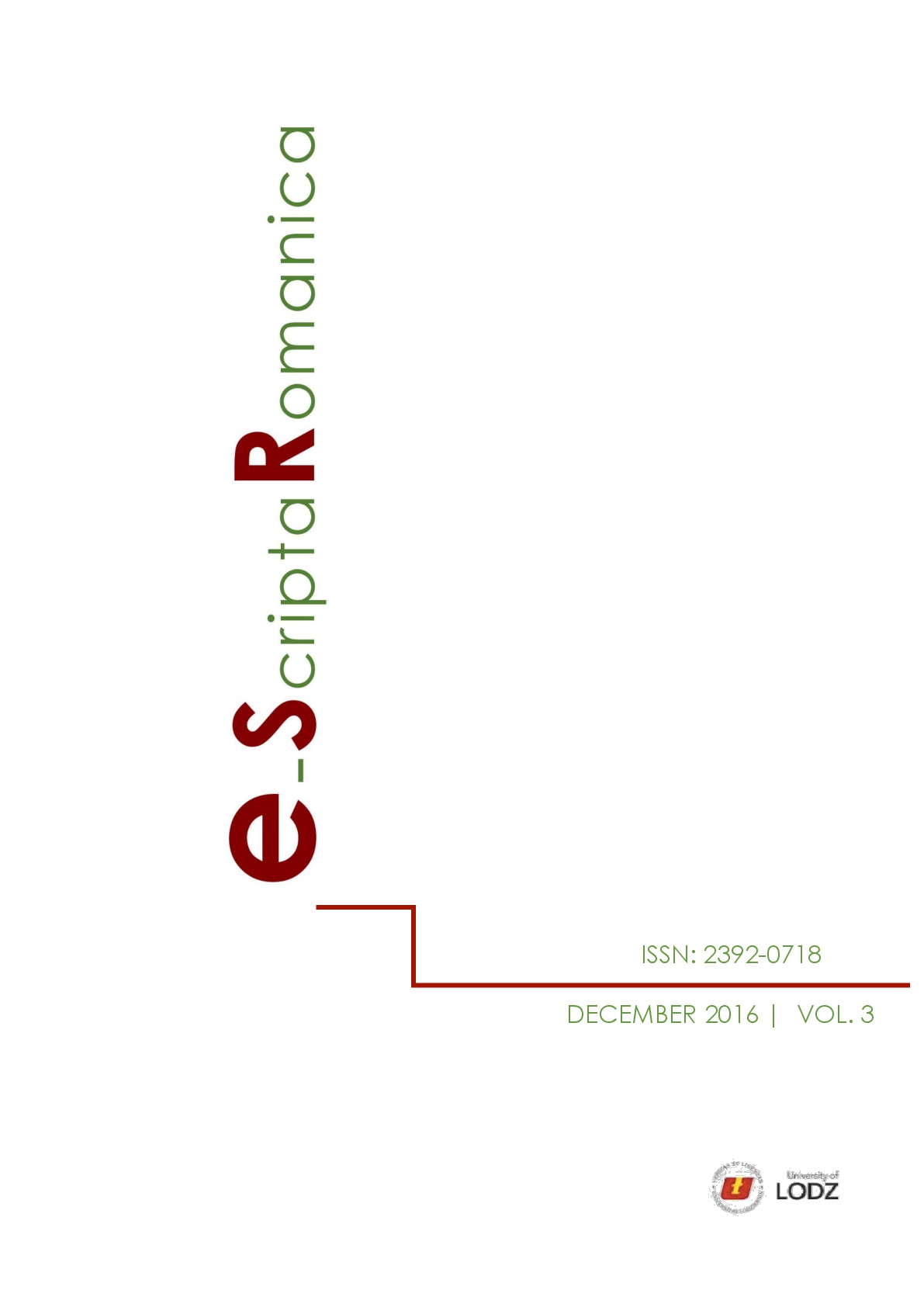The variability of ser and estar (Spa.) versus the ambivalence of être (Fr.): Values and didactic models
DOI:
https://doi.org/10.18778/2392-0718.03.06Keywords:
ser, estar, être, variability, ambivalentAbstract
The essential purpose of this contribution is to highlight the values of the copula of the Spanish verbs ser and estar opposit to the French être, and at the same time, to propose some didactic solutions to solve errors made by French speaking students who study the Spanish as L2. Following this concern attached to the teaching / learning of foreign languages, the study raises the problem of the versatility of the verbs ser and estar opposit to être whose ambivalent character also entails a process of linguistic interference that hinders the assimilation of the values of these copula of the Spanish verbs and their correct use by foreigners learners. At the methodological level, the study is based on several exercises of translation, the direct consultation of some native informants whose mother tongue is the Spanish, together with several grammar manual of reference on this topic. Thus, taking advantage of a broad corpus compiled through these resources, the values and the fonctions of these verbal elements are explained to boost their learning and correct use following some didactic guidelines based on notional, aspectual and comparative analysis.
References
ALETÁ, E. (2008): “Ser y estar con adjetivos, ¿cualidades o estados?”. Revista de Lingüística Aplicada a la Enseñanza. Vol. 2, pp. 1-10.
Google Scholar
ALONSO MORO, J. (2002): Los verbos españoles. Madrid: Difusión Editoriales.
Google Scholar
ALLOA, H. y S. MIRANDA DE TORRES (2005): Hacia una lingüística contrastiva francés-español. Córdoba: Comunic-arte Editorial.
Google Scholar
BOUZET, J. (2000) : Grammaire espagnole. Paris: Belin.
Google Scholar
DUBOIS, J. et alii. (1999) : Dictionnaire de la langue française. Paris: Larousse-Bordas
Google Scholar
DUVIOLS, M. et J. VILLEGIER (2000) : Grammaire espagnole. Paris: Hatier.
Google Scholar
GONZÁLEZ, C. y C. REOYO (2000): Diccionario de dificultades de la lengua Española. Madrid: Santillana.
Google Scholar
FERNÁNDEZ LEBORANS, M. J. (1999): “La predicación: las oraciones copulativas”. I. BOSQUE y V. Demonte (dirs.): Gramática descriptiva de la lengua española. Las construcciones sintácticas fundamentales. Relaciones temporales, aspectuales y modales.Vol 2. Madrid: Espasa Calpe, pp. 2357-2461.
Google Scholar
HERNÁNDEZ ALONSO, C. (1986): La Gramática funcional del español. Madrid: Gredos.
Google Scholar
JURADO SALINAS, M. (2014): “Fundamento teórico de un modelo para trabajar los verbos haber, ser y estar en aula de ELE”. Revista Nebrija de Lingüística Aplicada a las Lenguas. Vol. 17, pp. 8-25.
Google Scholar
GREVISSE, M. (1993) : Le bon usage. Grammaire française. 13ème édition. Paris: Duclot.
Google Scholar
LADO, R. (1957): Linguistics across cultures: Applied linguistics for language teachers. Michigan: The University of Michigan Press.
Google Scholar
MOLHO, M. (1992) : « Deux morphogénies : Fr. être, Esp. ser ». Revue Cahier de linguistique hispanique médiévale. Vol. 17, 1, pp. 5-31.
Google Scholar
MOLINER, M. (1994): Diccionario de uso del español. 1ª edición. Madrid: Gredos.
Google Scholar
QUILIS, A. (1986): Influencia del francés en el habla de los niños emigrantes en Francia. Madrid: Uned.
Google Scholar
RAE. (2010): La nueva gramática de la lengua española. Madrid: Espasa Calpe.
Google Scholar
RAE. (2014): Diccionario de la lengua española. Madrid: Espasa Calpe.
Google Scholar
REGUEIRO RODRÍGUEZ, Mª. L. (2008): “Algunas reflexiones sobre ser y estar, copulativos en la gramática española”. Revista Nebrija de lingüística aplicada a la enseñanza de lenguas. Vol. 2, 3, pp. 1-19.
Google Scholar
SERRANO CUESTA, J. (2007): “¿Es posible simplificar los usos de ser y estar en la enseñanza de ELE?”. Revista Electrónica de Didáctica. Vol. 10, pp. 17-23.
Google Scholar
SIGÚAN, M. y W. MACKEY (1986): “Educación y bilingüismo”. Revista Aula XXI, Educación bilingüe. Vol. 32, pp. 189-201.
Google Scholar
SILVAGNI, F. (2013): ¿Ser o estar? Un modelo didáctico. Madrid: Arco Libros.
Google Scholar
Downloads
Published
How to Cite
Issue
Section
License

This work is licensed under a Creative Commons Attribution-NonCommercial-NoDerivatives 4.0 International License.











